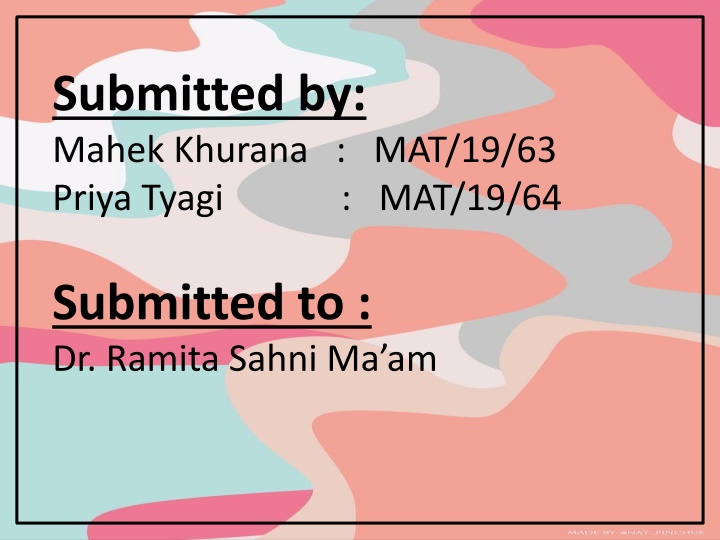
Mastering R Lists: Commands, Accessing Elements, and More
Delve into the world of R lists, a versatile one-dimensional data structure with diverse objects such as vectors, matrices, and functions. Learn how to create, manipulate, and access list elements, along with essential commands like changing elements and checking for existence. Explore predefined lists, naming elements, and converting lists to vectors for efficient data handling in R programming.
Download Presentation

Please find below an Image/Link to download the presentation.
The content on the website is provided AS IS for your information and personal use only. It may not be sold, licensed, or shared on other websites without obtaining consent from the author. If you encounter any issues during the download, it is possible that the publisher has removed the file from their server.
You are allowed to download the files provided on this website for personal or commercial use, subject to the condition that they are used lawfully. All files are the property of their respective owners.
The content on the website is provided AS IS for your information and personal use only. It may not be sold, licensed, or shared on other websites without obtaining consent from the author.
E N D
Presentation Transcript
Submitted by: Mahek Khurana : MAT/19/63 Priya Tyagi : MAT/19/64 Submitted to : Dr. Ramita Sahni Ma am
R Presentation Topic : Lists 6. Basic Commands 1. Introduction to lists 7. Changing lists elements 2. Predefined lists in R 3. Naming of list element ,structure and length of a list 8. Adding and removing list elements 4. Checking the existence of list elements 9. Joining two lists 5. Accessing elements of lists 10. Converting list to Vector
Introduction to Lists : Lists : List is one dimensional data structures with different type of objects . R can also contain a matrix or a function as it s element . It is made up of different type of vectors. List is created using command List ( ) function in R INPUT OUTPUT [ Note : Always use = inside the list ] [ Note : Always use = inside the list ]
Predefined List : List for Letters and month names are predefined letters LETTERS Month.abb Month.name
Naming of Lists elements We can give name to the elements of list using command names()<-c( , ). Structure and Length of a list Structure : tell us type of elements of the list using the command str( ). Length: tell us number of the elements of the list Using the command length ( ),
Checking of existence of List s elements : There are three ways of finding this . %in%-Operator Is.null Function exists Function . 1 2 3
Accessing elements of lists: Accessing list elements : You can access the list items anytime by referring to its index number, inside single or double square brackets. The first item has index 1, the second item has index 2, and so on. In case of named lists it can also be accessed using the names using $ . INPUT OUTPUT
Basic Commands : OUTPUT INPUT
Changing list elements : Changing list elements : To change the value of a specific item, refer to the index number for example to change the 1st element whose index is 1 first write the name of the list followed by the index written in single or double square brackets and then with the help of assignment operator assign the new value to that particular element of list . INPUT OUTPUT
Adding and Removing list elements : Adding new element :We can add a new element by assigning it to an unused index. Removing list element : We can delete a element by reassigning it to NULL. OUTPUT INPUT
Joining two lists : Joining two or more lists : There are several ways to join, or concatenate, two or more lists in R. The most common way is to use the c() function, which combines two elements together: INPUT OUTPUT
Converting list to Vector : Converting : A list can be converted to a vector so that the elements of the vector can be used for further manipulation. All the arithmetic operations on vectors can be applied after the list is converted into vector. To do this conversion, we can use the unlist() function. It takes the list as input and produces a vector. OUTPUT 1 INPUT OUTPUT 2





















